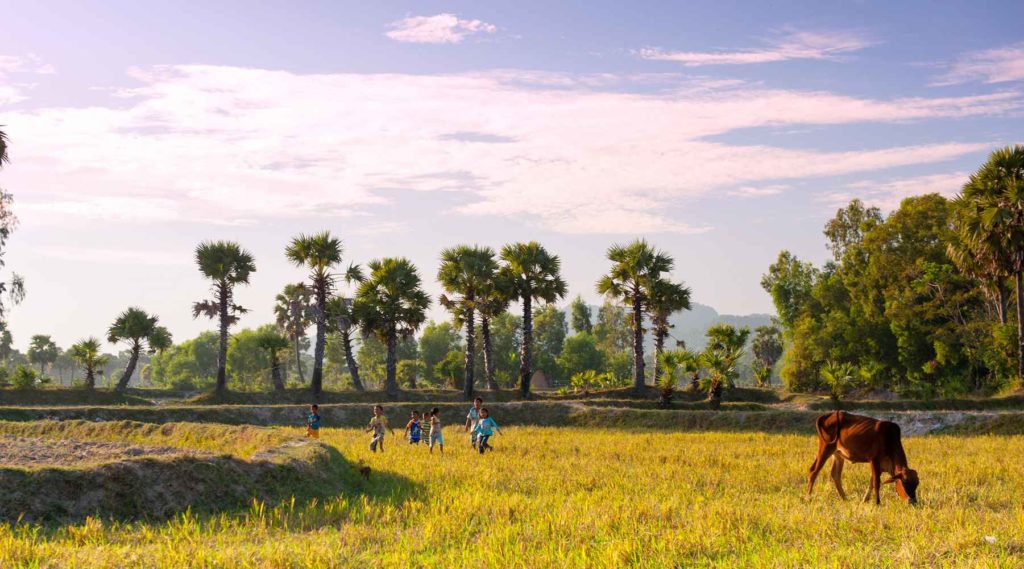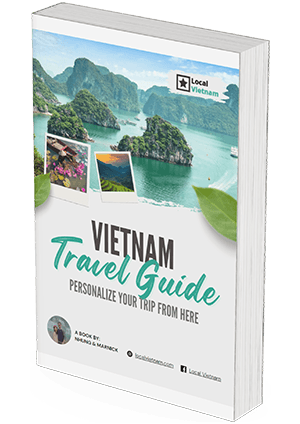An Giang – Vietnam’s border province
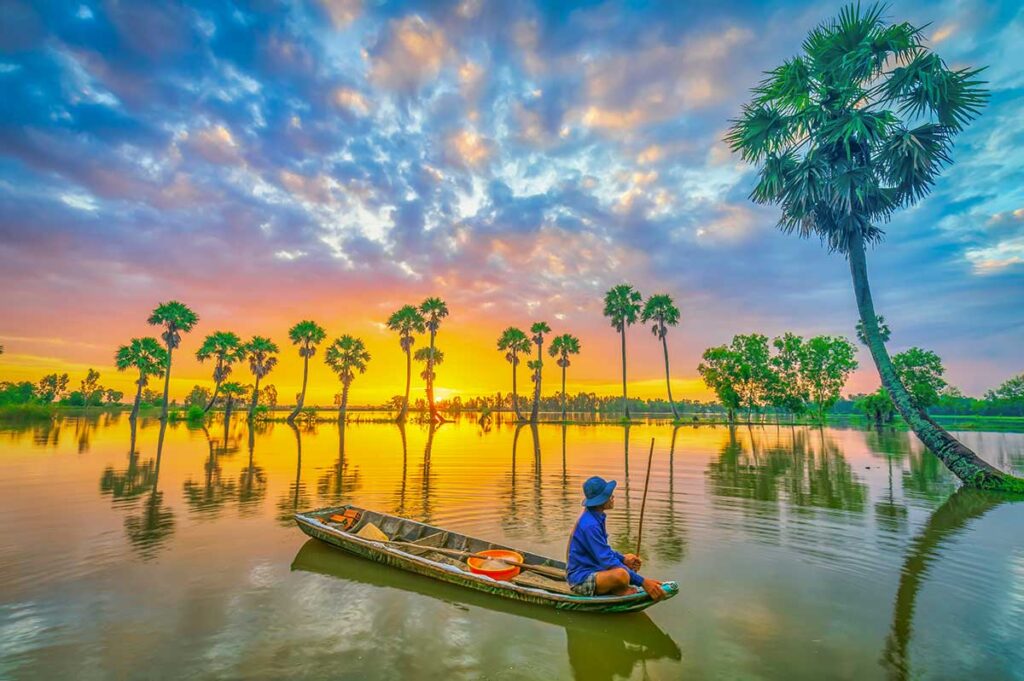
An Giang is located in the far southwest of the Mekong Delta, where Vietnam meets Cambodia along a border that stretches for nearly 100 kilometers. Unlike much of the flat Delta, this province combines wide rivers, endless rice fields, and lines of sugar palm trees with a chain of low mountains that give the landscape a rare and distinctive character. Life here is closely tied to the waterways, from fishing and farming to floating markets and river-based trade.
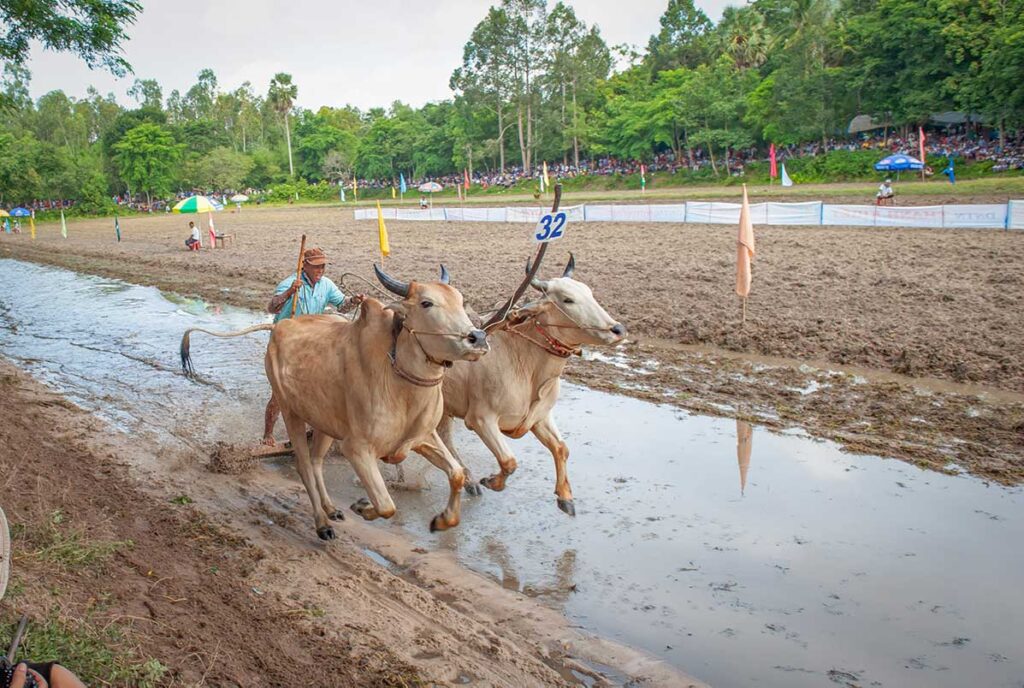
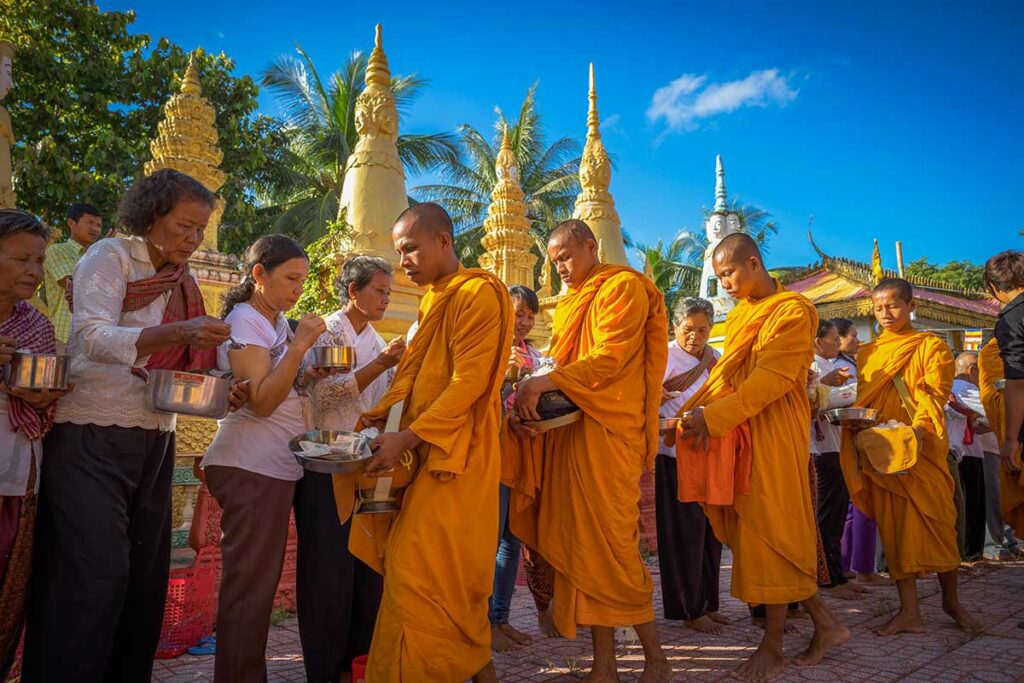
The population is a mix of Vietnamese, Khmer, Cham, and Chinese communities, creating a multicultural setting reflected in temples, mosques, festivals, and cuisine. An Giang is best known for Chau Doc town, Sam Mountain, the bird-filled Tra Su Forest, and easy border crossings into Cambodia. Tourism is still less developed than in Can Tho or Ben Tre, which gives the province a more authentic atmosphere, though services and visitor numbers are steadily growing.
Best things to do in An Giang
When planning your trip, you’ll quickly see that the best things to do in An Giang range from vibrant river towns and spiritual mountains to peaceful forests and rice fields dotted with palm trees. The province has a slower pace and more authentic feel than many other Mekong Delta destinations, making it rewarding for travelers who want to explore beyond the usual routes.
1. Chau Doc – Gateway town
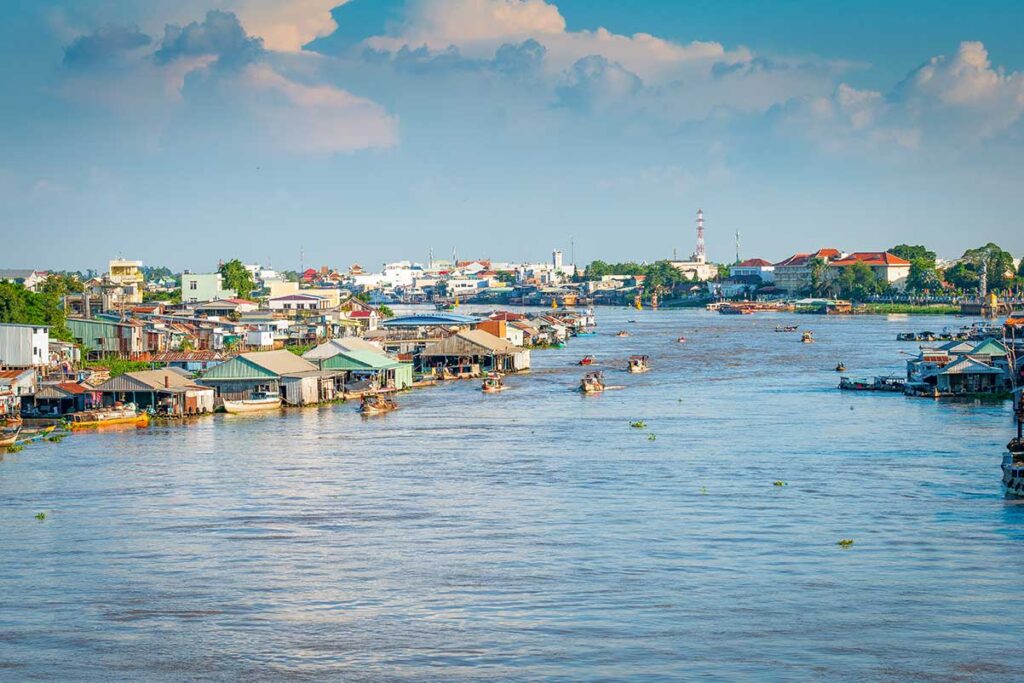
Chau Doc is the main travel base in An Giang, set along the Bassac River close to the Cambodian border. The town has a lively riverside atmosphere, especially around its bustling market where traders sell everything from fresh produce to local snacks. In the evenings, floating restaurants along the quay are a good place to try Mekong-style fish dishes while watching river life drift past.
Cham Village

Just across the river from Chau Doc lies a Cham community, an ethnic group with Islamic traditions. The village is home to mosques, stilt houses, and families who keep alive the craft of brocade weaving. It’s not overly touristy, and the best way to experience it is by taking a short boat trip, which offers a glimpse into daily life without disturbing its quiet character.
Floating houses & Fish farms
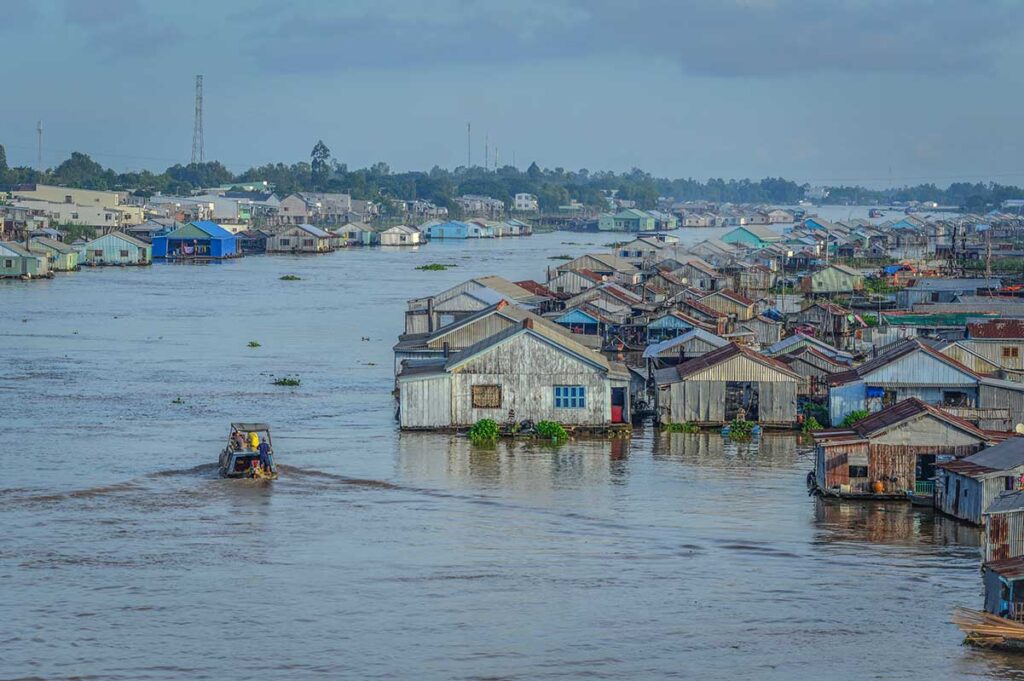
Also near Chau Doc are clusters of floating houses, many of which double as fish farms. Underneath the wooden homes, families raise fish—often tilapia—that are sold across Vietnam and even exported abroad. Touring the area by boat gives you an honest look at how people live directly on the water, with kitchens, living rooms, and even televisions balancing above the river.
2. Sam Mountain
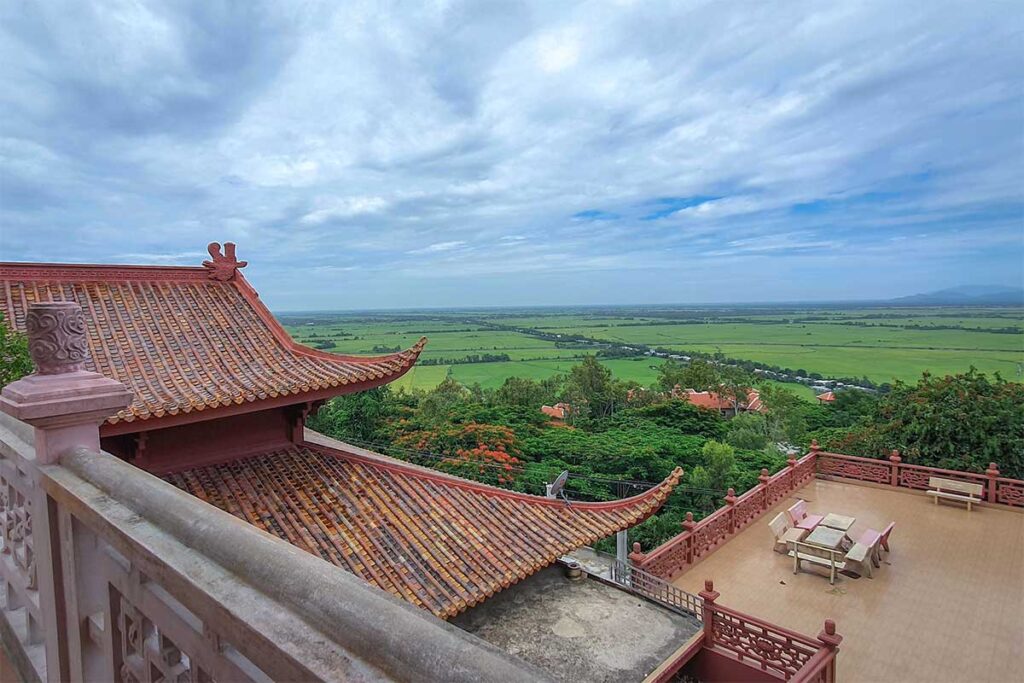
Rising above the flat Delta plains, Sam Mountain is a major pilgrimage site and one of the province’s most famous landmarks. The slopes and base are dotted with pagodas and temples, while the summit offers sweeping views over rice fields, Chau Doc, and across the border into Cambodia. The Ba Chua Xu Temple at its base is the center of a large annual festival, when thousands of pilgrims gather to worship and celebrate in a vibrant mix of culture and spirituality.
3. Long Xuyen – Provincial capital

Long Xuyen, the largest city in An Giang, has a very local character with few international tourists. It feels more like a busy Mekong trade hub than a sightseeing destination, but that’s part of its charm. Stopping here gives you a better sense of daily life in a provincial capital and provides access to one of the Delta’s lesser-known floating markets.
Long Xuyen Floating Market

Held early in the morning, the Long Xuyen Floating Market is smaller and more authentic than its famous counterparts in Can Tho or Cai Rang. Vendors on wooden boats sell fruit, vegetables, and breakfast dishes directly from the water. While it has shrunk in size over the years and is gradually disappearing, it still offers a memorable, down-to-earth glimpse into river trade for those who make the effort to visit at dawn.
4. Tra Su Cajuput Forest
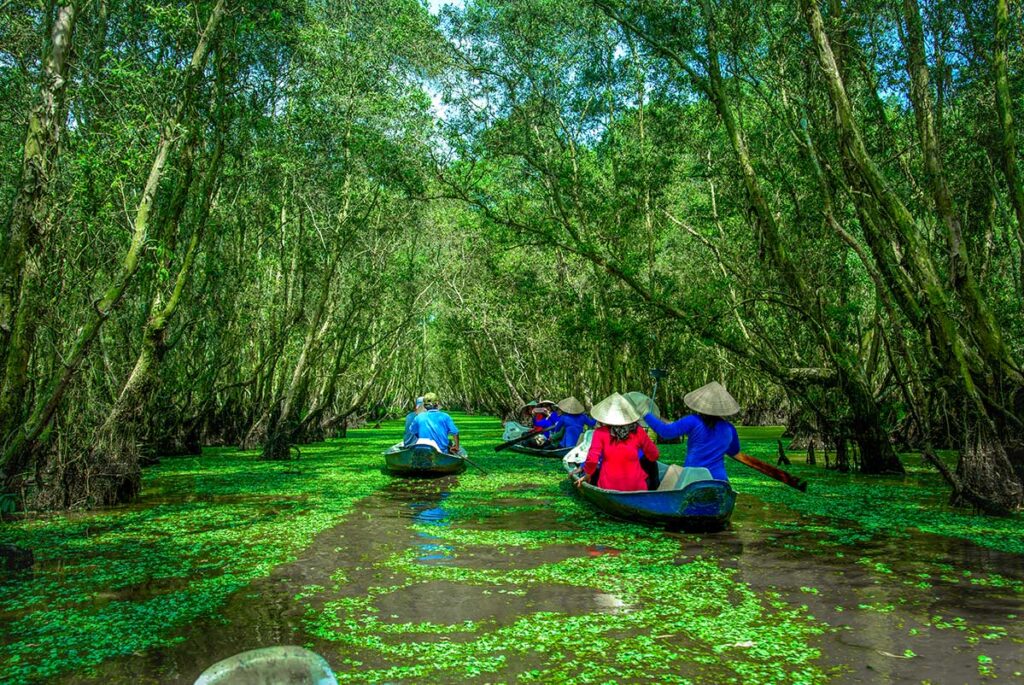
Tra Su Cajuput Forest is one of An Giang’s most striking natural attractions, a flooded forest that comes alive during the floating season from September to November. Visitors can take small wooden boats or motorized sampans through narrow waterways shaded by tall cajuput trees, with green carpets of duckweed covering the water’s surface. The area is home to dozens of bird species, reptiles, and aquatic plants, making it a haven for biodiversity. While the forest has a peaceful atmosphere in the early morning, it can get busy with domestic tour groups later in the day, so timing your visit makes a big difference.
5. Ta Pa Rice Fields

The Ta Pa Rice Fields are among the most photogenic landscapes in the Mekong Delta, framed by mountains and dotted with tall sugar palms. This rural area has a quiet, off-the-beaten-path feel, with no large-scale tours or facilities, so exploring by motorbike is the best option. The fields are particularly beautiful during the harvest season, when shades of green and gold stretch across the valley and reflect in the small lakes nearby.
Ta Pa Temple

Overlooking the rice paddies, Ta Pa Temple sits on a small hill and offers panoramic views of the surrounding fields and mountains. The temple itself is modest, but the elevated position makes it a worthwhile bonus stop for photos and a peaceful break during a countryside trip.
6. Oc Eo Archaeological Site
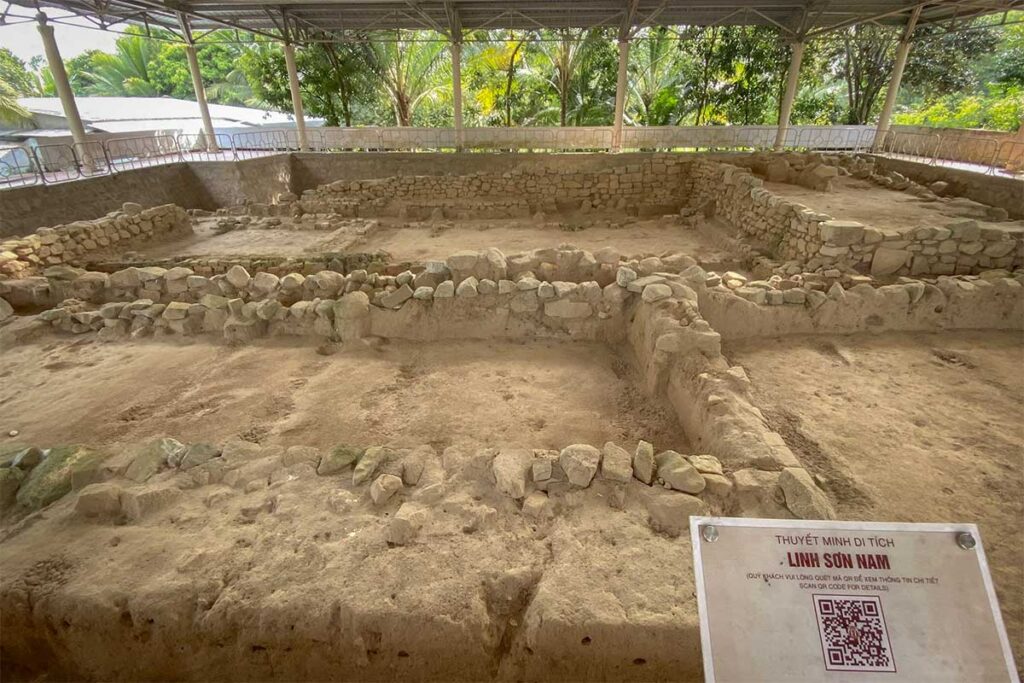
The Oc Eo Archaeological Site preserves relics from the ancient Funan Kingdom, which flourished in southern Vietnam and Cambodia between the 1st and 7th centuries. Excavations here have uncovered tools, jewelry, and pottery that point to a once-thriving trading civilization connected to India and China.
A small museum displays many of these artifacts, providing insight into a little-known part of regional history. While the site is not large or visually dramatic, it is a meaningful stop for history enthusiasts interested in early Southeast Asian cultures.
Best time to visit An Giang
Weather
An Giang has a warm, tropical climate with stable temperatures averaging between 26–28 °C (79–82 °F) throughout the year. The dry season runs from December to April, offering the easiest travel conditions, while the rainy season from May to November brings short but heavy downpours that shape much of the region’s river life and floating landscapes.
Rice seasons
Rice in An Giang is planted two to three times per year, depending on the area. For visitors, the fields are most scenic during the growing and harvest periods:
- January – March (dry season crop): Fresh green paddies, gradually turning golden before harvest.
- May – August (wet season crop): Lush green fields, often with dramatic skies from seasonal rains.
- October – December (late crop/second harvest in many areas): Golden rice fields, especially beautiful around Ta Pa, with sugar palms framing the landscape.
These seasonal changes make the countryside colorful year-round, but the late-year harvest at Ta Pa is considered the most photogenic.
Festivals
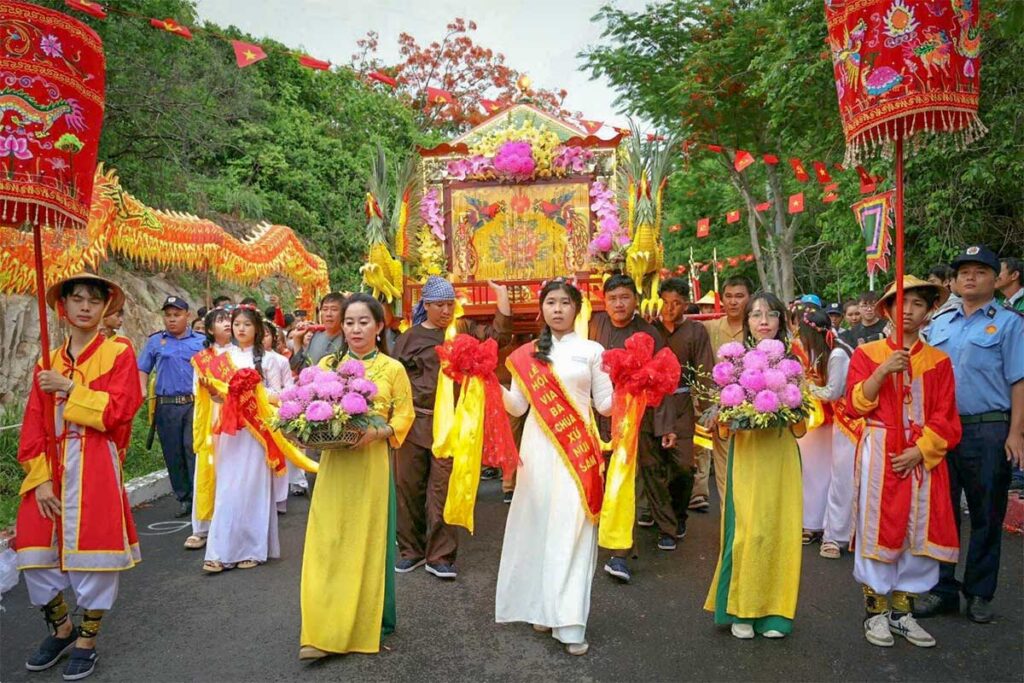
Two of the province’s biggest cultural events are tied to the lunar calendar. In the fourth lunar month, the Ba Chua Xu Festival at Sam Mountain draws thousands of pilgrims for days of rituals and celebrations.

In the tenth lunar month, Khmer communities in An Giang host the traditional ox racing festival, a lively event where decorated bulls race across muddy fields in a mix of sport and spiritual tradition.
How to get to An Giang
Direct buses from Ho Chi Minh City
Several bus companies connect Ho Chi Minh City with Chau Doc and Long Xuyen, the two main hubs in An Giang. The journey takes around 6–7 hours and ticket prices are usually between 120,000–200,000 VND depending on the operator and seat type. Buses leave throughout the day, with overnight options available for those who prefer to travel while sleeping.
Private transportation
Hiring a private car with driver is the most comfortable way to reach An Giang, especially if you want to stop along the way or combine it with other Mekong Delta provinces. Many travelers arrange multi-day bookings so the car can also be used to get around locally. This option is more expensive than buses but saves time and hassle, particularly for families or small groups.
Motorbike road trip
The distance from Ho Chi Minh City to An Giang is about 250 kilometers, making it possible to ride by motorbike. The route takes most of a day and involves navigating busy roads in the Delta, so it is best suited to experienced riders with a valid license. Many travelers who choose this option turn it into a road trip, stopping in places like Can Tho or Sa Dec before continuing deeper into the province.
How to get around
In towns
Getting around cities like Chau Doc and Long Xuyen is simple with taxis and ride-hailing apps such as Grab. Distances within town are short, so rides are quick and affordable. Walking is also pleasant in the market areas and along the riverfront, though traffic can be busy.
In countryside
To explore the rural areas, the most flexible option is renting a motorbike, which allows you to reach rice fields, temples, and villages at your own pace.
For those who prefer more comfort, arranging a car with driver is convenient and works well for families or groups.
Cycling is a great way to enjoy short loops through quiet backroads and paddies, though it is less practical for longer distances unless you arrange quality bikes in advance.
Where to stay in An Giang
Chau Doc – Best base
Chau Doc is the most popular place to stay, with a good range of hotels and guesthouses close to the river and Sam Mountain. Options include the Victoria Chau Doc Hotel, a comfortable riverside property with a pool; Victoria Nui Sam Lodge, set on the hillside with panoramic views; and budget-friendly choices like Murray Guesthouse, known for its friendly service and free bicycles. Staying here also makes it easy to arrange boat trips, visit Cham villages, and cross into Cambodia.
Long Xuyen
Accommodation in Long Xuyen is mostly standard city hotels. They are convenient if you’re visiting the floating market or passing through on business, but they lack the charm of staying by the river in Chau Doc. Still, it’s a practical option for travelers who prefer a larger city environment.
Rural stays
In the countryside of An Giang, options are limited compared to other Mekong Delta provinces like Ben Tre or Can Tho. A few basic homestays exist near rice fields and villages, offering simple rooms and a glimpse of local life, but services are minimal. These are best suited for travelers who value authentic rural experiences over comfort.
Travel tips for An Giang
How long to stay
Plan to spend at least 2 days in An Giang. The province is too far from Ho Chi Minh City for a day trip, and the main highlights like Chau Doc, Sam Mountain, Tra Su Forest, and Ta Pa Rice Fields require some time to explore without feeling rushed.
Border Crossings to Cambodia
An Giang has several land border gates into Cambodia, making it a convenient route for onward travel. The main checkpoints are Vinh Xuong (Tan Chau District), Tinh Bien, Khanh Binh, and Vinh Hoi Dong. From Chau Doc, you can also take boats directly to Phnom Penh, a popular option for travelers continuing their journey upriver.
What to Bring
Pack light, breathable clothing for the warm climate, along with mosquito repellent and rain gear if traveling during the wet season. Comfortable footwear is helpful for walking around markets, temples, and rural areas.
Where to go next?
An Giang combines well with other destinations in southern Vietnam. From here you can head to Ha Tien for ferries to Phu Quoc Island, continue through the central Mekong with stops in Can Tho or Sa Dec, or travel by river or road to Phnom Penh in Cambodia.
Suggested 2-day itinerary
Day 1: Chau Doc & Sam Mountain
- Morning
- Explore Chau Doc market for a taste of local life.
- Take a boat trip to visit the Cham village and floating houses on the river.
- Afternoon
- Visit temples and pagodas around Sam Mountain.
- Enjoy the sunset view from the summit, looking across rice fields and into Cambodia.
Day 2: Rural An Giang
- Morning
- Head to Tra Su Cajuput Forest for an early boat trip through the flooded trees.
- Afternoon
- Explore the Ta Pa rice fields, famous for sugar palms and photogenic scenery.
- Stop at Ta Pa Temple for panoramic views over the countryside.
